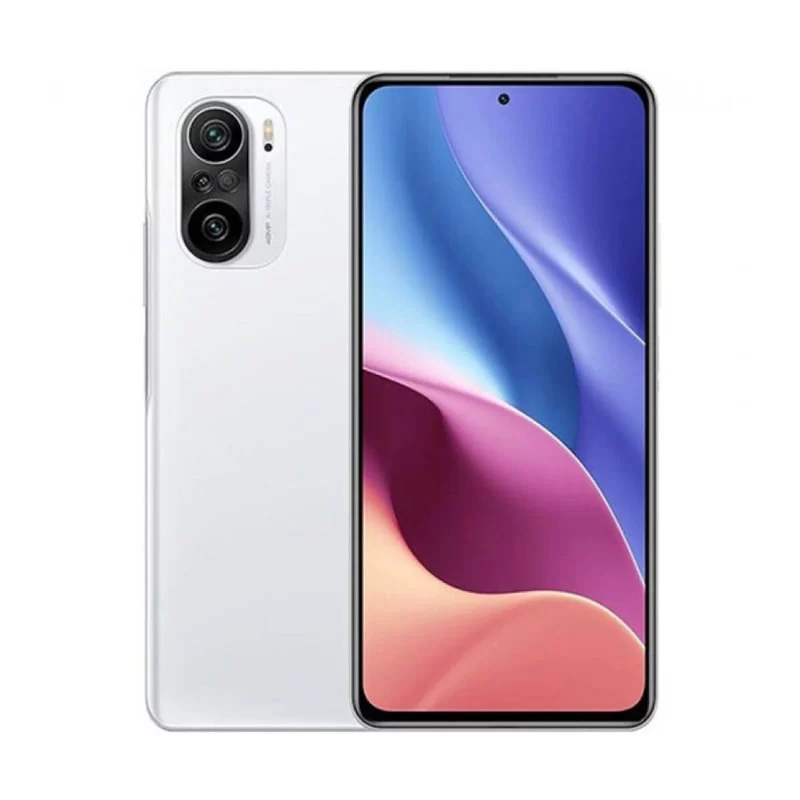The Xiaomi Mi 11i is the third high-end mobile the company has presented in Spain this year. We emphasize the high-end because if we looked at the portfolio of new products in 2021, we have to use all the fingers of our hands, and we would be missing several.
This device is presented as a cheap Xiaomi Mi 11, although along the way, it leaves behind some of the functions that most attracted the attention of its older brother. In return, the price is 100 euros lower, at least if we look at the costs at its launch.
We put the glass aside.
The first thing that caught my attention when opening the Xiaomi Mi 11i box and taking it in hand was its finish. It immediately reminded me of the Xiaomi Redmi Note 10S that I still have on loan, a device that costs three times less.
This is because, unlike the Mi 11, Xiaomi has opted for plastic materials in this model, as Samsung and OnePlus have done in their cheaper models. The point is that the S21 and OnePlus 9 give a better feeling in the hand; they do not instantly convey the image of a cheap mobile.
Despite that, the Mi 11i is a comfortable terminal daily, which is not heavy and very ergonomic.
The fingerprint sensor, located on the side, works very well, but it does not help us get rid of the idea that we are dealing with a mid-range mobile, not a high-end one as Xiaomi wants to position it.
We have a double speaker but no headphone jack, which is also reminiscent of the high-end but that we have in the cheapest Xiaomi mobiles.
Inside he is like his big brother.
Where we have no complaint is in performance. This Xiaomi Mi 11i uses the Snapdragon 888, a first-rate processor that allows us to perform any action, play any game, and have no performance complaints.
Of course, as happens in the rest of the models that use this processor, the Mi 11i heats up when we demand a lot of it, and the battery consumption skyrockets, as you will see in the autonomy section. It does not become worrying, as we have seen in previous generations of Qualcomm processors.
The unit they gave us has 8 GB of RAM and 256 GB of internal memory, with LPDDR5 and UFS 3.1 technologies. The latter, not the figures, differentiates this model from the Redmi Note variants.
It also shares with them the fingerprint sensor’s position, which is on the right side and works well with both hands. However, it continues to activate by mistake when we pick up the terminal from the table or any surface, which is slightly irritating.
The double speaker is more powerful and reminiscent of the Xiaomi Mi 11 than the company’s mid-range models.
best flat screen
Xiaomi boasted in presenting this model with the best flat screen on mobile. The section on the shape of the panel is relevant because the Xiaomi Mi 11 uses a board with QHD resolution, but its larger sides are curved.
This model has eliminated this curvature in the same way that OnePlus destroyed it from the OnePlus nine but not from the 9 Pro.
So, we are facing an AMOLED panel with FHD+ resolution and a refresh rate of 120 Hz. Its quality is excellent, but it is not particularly far from that of the Redmi Note 10 Pro. And it is not because this Mi 11i has a bad screen, but because the one we analyzed a few weeks ago used one that, as we said, seemed more like a high-end than a mid-range.
Of course, here, we have more brightness and support for HDR10 + instead of the HRD10 of the Note 10 Pro.
A good camera that falls short
The Xiaomi Mi 11i has three rear sensors.
The Xiaomi Mi 11 cut back on the camera compared to the Ultra model, and this Mi 11i does the same concerning the Mi 11.
No, it does not do it in the primary 108 Mpx sensor, which is the same as the other model, but in the wide angle, which goes from the 13 Mpx of the Mi 11 to 8 Mpx, a figure that is entirely insufficient for a high-end terminal.
The macro also remains unchanged and takes good photos, but we still think it is unnecessary to mount a sensor for this when it can be included in the wide angle.
The quality of the photographs is not bad, but it gives us the feeling that this time the skies are somewhat more saturated than in the images of the Xiaomi Mi 11, whose gallery you can see at this link.
In addition, it gives the feeling that the contrast is very high and that the automatic HDR does not solve it. Of course, it does not create unreal photos as in other models.
The wide angle performs surprisingly well in colour accuracy and other parameters, and we only miss a little more resolution. However, we are aware that in these types of images, we are not going to crop or zoom.
At night the quality of the images is maintained, more or less, on the primary sensor. The lights appear without halos, and the detail is correct, even if we do not shoot at 108 Mpx. The problem comes in the macro, which loses a lot of detail and sharpness, which is normal. And also in the wide angle suffers from resolution and light control.

